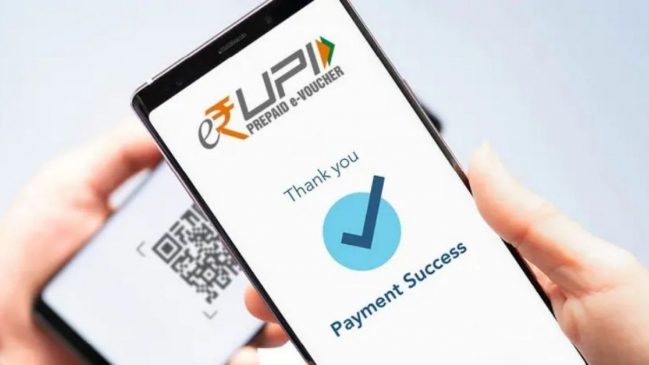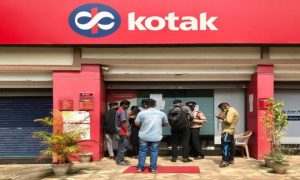The National Payments Corporation of India (NPCI) has announced interchange changes (similar to merchant discount rates) for pre-sanctioned UPI credit lines offered by banks. The NPCI issued a circular in this regard to banks on August 16, 2024, and the new charges will be effective from October 16, 2024.
According to the circular, an interchange charge of 1.2% of the transaction amount will be applicable, except for special rate categories. The acquirer bank (which processes the payment on behalf of the merchant) will pay this interchange charge to the issuer bank (the bank that has given the credit to the individual). The interchange charge of 1.2% will be applicable to “non-industry merchants” – a category the NPCI uses to classify businesses. Further, this interchange charge will apply to interest-free credit lines on Unified Payments Interface or UPI. According to the circular, the interchange charge on “industry merchants” will be between 0.50% and 1.10% of the transaction amount.
Read More:- Byju’s Insolvency Proceedings Case: Supreme Court Schedules Plea Hearing For September 17
The move is likely to encourage more merchants to accept credit line on UPI as one of the payment mechanisms.
For customers, the UPI credit line gives an additional and easier option to purchase goods on credit even if they do not have credit cards. They just have to activate the credit line option on their UPI application linked to a bank.
Before we get into that in detail, let us understand how the fees will be charged.
Read More: Govt To Build 11 Highways And Expressways In 16 States By 2025
How interchange fees on UPI credit line will work
Here is an example of how the interchange charge will work. Suppose a user goes to Croma to buy an electronic product and makes a payment via a credit line on UPI using a QR code. Let us also assume that the merchant uses a POS machine of Axis Bank and HDFC Bank is the issuer bank for the UPI credit line. Axis Bank, being the acquirer, will pay 1.2% of the transaction amount to HDFC Bank, the issuer bank.
Rahul Jain, CFO of NTT DATA Payments Services India, says, “The interchange charge levied on the credit line on UPI is similar to how the merchant discount rate (MDR) works on a credit card but less than credit card charges.”
Read More: Earthquake Tremors Felt In Delhi-NCR, 5.8 Magnitude Recorded On Richter Scale
According to the circular, even the UPI app service provider and the payer PSP (payment service provider) bank will earn a portion of the interchange fee. The circular states that payer PSP bank and UPI apps will earn 0.05% each from the transaction, provided the payment is made for non-industry programmes and on interest-free credit lines on UPI. The issuer bank will pay this fee to the payer PSP bank and the UPI app concerned.
Payer PSP banks and UPI apps will earn 0.04% of the transaction amount for industry category merchants.
Continuing with the example, let us assume the payment was made using the PhonePe app (a third party application provider or TPAP), and the payment service provider (PSP) bank is ICICI Bank. HDFC Bank (issuer bank) will pay 0.05% of the transaction amount to ICICI Bank (PSP bank) and 0.05% to PhonePe (UPI app/TPAP) from the 1.2% interchange charge.
Read More: Uber Black to relaunch in Mumbai next week: What benefits will riders enjoy?
Sivaram Kowta, President of Zeta India, says, “The NPCI circular is silent on the interchange fee for interest-bearing credit lines on UPI. It is assumed that there are no interchange fees on the interest-bearing credit lines on UPI. A clarification on this would be helpful. However, the issuer bank is required to pay 0.04% each to the payer PSP bank and UPI apps of the transaction amount for the merchant (industry or non-industry) transaction done.”
Nil charges on these transactions of UPI credit line
The NPCI circular says there will be no charges – interchange fee, Payer PSP and UPI app charges – for transactions up to Rs 2,000 at small offline merchants.
How interchange fees can impact customers
As a merchant discount rate or MDR is levied on credit card payments, many offline merchants put up a sign saying, “3 or 3.5% will be charged extra on credit card payments.” This is done so that merchants can recover this cost from customers. Now that an interchange fee will be levied on the pre-sanctioned credit line on UPI, let us understand how it is likely to impact the amount paid by customers when availing goods and services via credit lines on UPI.
Read More: Haryana Assembly Elections 2024: CM Nayab Singh Saini Files Nomination From Ladwa Constituency
Kowta from Zeta India says, “The pre-sanctioned credit lines on UPI offer users easy access to credit on demand. However, small merchants are usually hesitant to accept credit payments due to higher MDR charges (up to 3.5% of the transaction amount). The interchange fee levied on the pre-sanctioned credit line on UPI is lower than the MDR levied on Rupay credit cards (of 1.6% of the transaction amount) or up to 3.5% for other credit card payments. The lowest interchange fee on the credit line on UPI should encourage merchants to adopt this payment method without any additional burden to consumers.”
Read More: Adani Airports Launches Digital Platform ‘Aviio’ For Real-Time Updates
Concurring with the view, Jain from NTT DATA Payments Services India says, “There are certain parameters or criteria based on which a credit card is issued to a user. The availability of pre-sanctioned credit lines on UPI will provide users with easy access to credit. The lower interchange fee is likely to encourage the merchants to adopt it as a payment mechanism without any extra charges on consumers.”





































